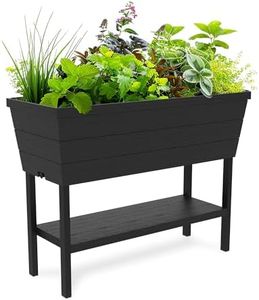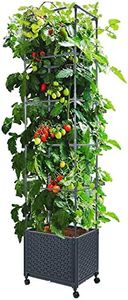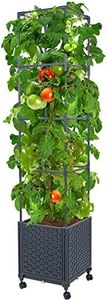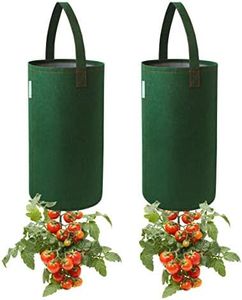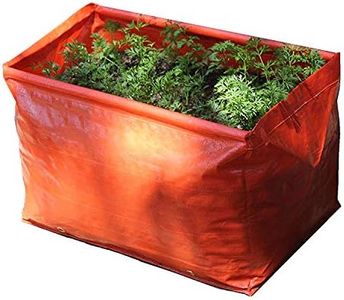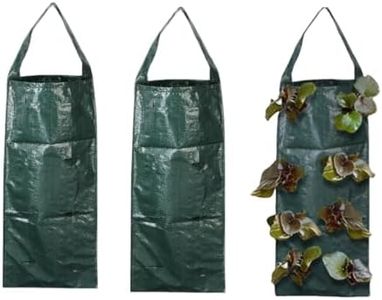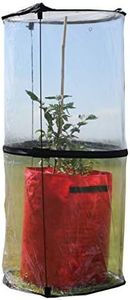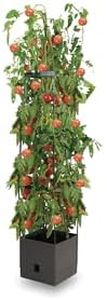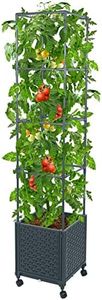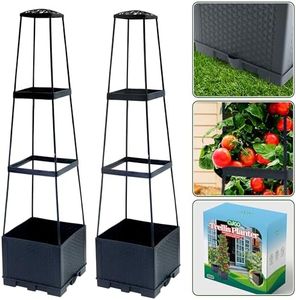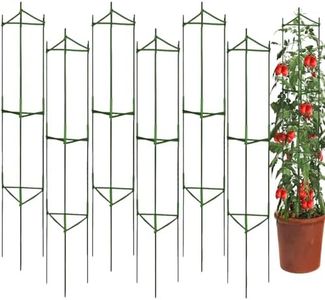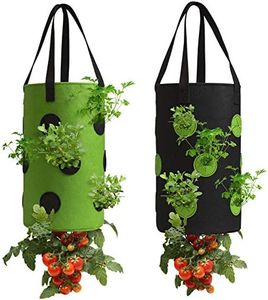We Use CookiesWe use cookies to enhance the security, performance,
functionality and for analytical and promotional activities. By continuing to browse this site you
are agreeing to our privacy policy
10 Best Tomato Planters
From leading brands and best sellers available on the web.Buying Guide for the Best Tomato Planters
Choosing the right tomato planter can make growing tomatoes much simpler and more successful, whether you have a big garden or just a small balcony. The right planter will provide the ideal environment for your plants’ roots, drainage, and support. When picking a tomato planter, it’s important to consider where you’ll put it, how many plants you want to grow, and how much care you want to apply. Understanding key features will help you select a planter that fits your lifestyle and gardening space, ensuring your tomato plants have everything they need to thrive.Size and CapacitySize and capacity refer to how much soil the planter can hold, which affects how large your tomato plants can grow. Tomatoes need enough space for their roots to spread and for nutrients to keep the plant healthy. Smaller planters (5-10 gallons) are suited for dwarf or bush tomato varieties and tight spaces, while medium to large planters (10-20+ gallons) are better for standard or indeterminate tomatoes that need plenty of room to develop. Choose the size based on the type of tomato you prefer and the space you have; bigger planters generally mean healthier, more productive plants.
MaterialPlanters can be made from plastic, ceramic, fabric, wood, or metal, and each has its own benefits. Plastic is lightweight, retains moisture well, and is easy to move, making it good for beginners or those needing mobility. Fabric pots offer excellent drainage and air circulation for healthy roots but can dry out quickly in hot weather. Wooden planters are sturdy and insulate roots from extreme temperatures, while ceramic is decorative but heavy and breakable. Metal looks stylish but can heat up or corrode. Think about your climate, the planter’s location, and if you plan to move it often when deciding on material.
DrainageDrainage is about how well excess water can escape from the planter so roots don’t rot. Good drainage is essential for tomatoes because soggy soil can lead to unhealthy plants. Some planters have built-in holes or systems that allow water to flow out, while others need you to add your own holes. If you live in a rainy area or tend to overwater, pick a planter with excellent drainage. If your environment is very dry, you might want something that holds moisture a bit better.
Support FeaturesMany tomato plants need support as they grow—the vines can become heavy with fruit and require stakes, cages, or trellises to stay upright. Some planters come with built-in support systems, while others will need you to add a cage or stake. If you want an easy, all-in-one solution, look for planters with attached supports. If you already own cages or plan to use a balcony railing or fence, you might not need built-in supports. Consider how tall and heavy your tomato variety will get.
Watering SystemA watering system can make it much easier to keep your tomatoes at the right moisture level. Self-watering planters have reservoirs that provide a steady supply of water, which is great if you travel or forget to water. Simple planters rely on manual watering and work fine if you’re attentive. Choose a self-watering system if you want less maintenance, or if you live in a hot climate, as it helps prevent soil from drying out too quickly.
PortabilityPortability refers to how easy it is to move the planter if you need to chase the sun or bring your tomatoes inside during bad weather. Lightweight materials and built-in wheels or handles make moving much easier. If you expect to relocate the planter often or if you have limited sunlight in your yard or on your balcony, look for options that you can easily shift to optimize your plants’ exposure.
